Running Deep in the Heart of Ethiopia’s Rift Valley
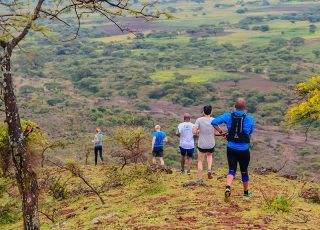
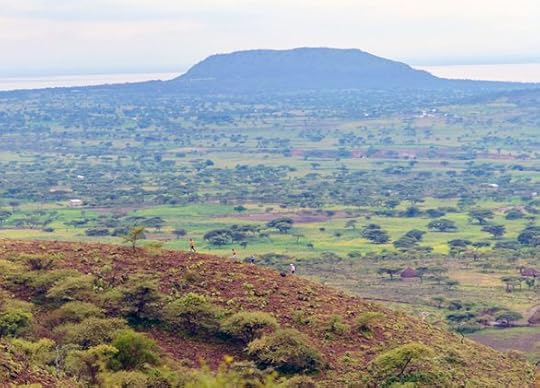
Located in the heart of Ethiopia’s ancient Rift Valley, along the shores of lakes Abijata and Shalla, the international Ethiotrail trail race is held every August. Set in the wild and beautiful Abijatta-Shalla Lakes National Park, Ethiotrail offers 21K and 12K distances that wind through Oromo tribal villages, thick Acacia forests, up and over ancient volcanoes and along the shores of Lake Shalla. For the third year, a large field of Ethiopian and international runners from more than 20 countries raced over the landscape in a celebration of trail racing, park conservation and cultural honoring.
August is the rainy season in Ethiopia, and so it was no surprise that the Aug. 7 race was true to its trail running roots, with small ravine crossings, off-trail sections climbing rocky volcanoes and winding two-track sections that took runners through Oromo tribal villages. Many of the local Oromo people came out to cheer on the runners, watching as everyone had a chance to win the substantial prize purse of 10,000 Birr (roughly equivalent to one month’s pay in Ethiopia). In the end, despite the rough nature of the course, the winning Ethiopian runners were able to cover the course in 1:16 for the men and 1:28 for the women.
Get a glimpse of the splendors of the Ethiotrail races through the images and captions below.
Photo Gallery
1 of {count}
Back to Start
View Larger Image
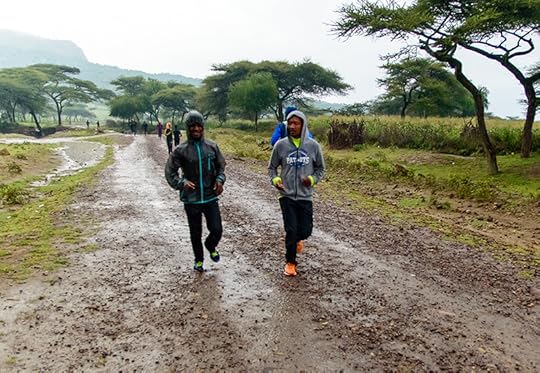
Ethiopia's Ethiotrail Races
After a night of rain, race-day conditions were wet and sloppy in places—including a washed out section of the course. However, that was to be expected during the rainy season in Ethiopia, which runs from June through September. Photo: Peter N. Jones
View Larger Image

Ethiopia's Ethiotrail Races
Despite the rain, spirits were high among runners, as there are few official trail races in Ethiopia. Photo: Peter N. Jones
View Larger Image

Ethiopia's Ethiotrail Races
In Ethiopia, races are taken very seriously among the local runners. For many, it is a way to gain recognition – and the substantial prize purse of 10,000 Birr (roughly equivalent too one month's pay) attracted some top athletes to the race. Photo: Peter N. Jones
View Larger Image
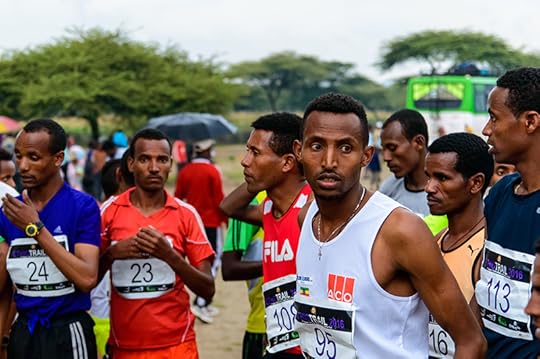
Ethiopia's Ethiotrail Races
Several of the Ethiopian runners in the races had personal bests for the half marathon under 1:10. Here Fiqru Leoulseged (#95), running for Club Elmi Olindo, contemplated the competition and prepared himself for the race. Photo: Peter N. Jones
View Larger Image
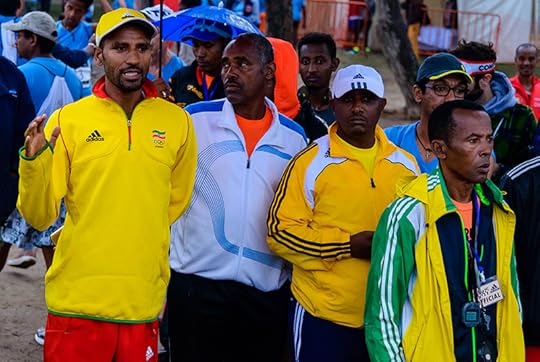
Ethiopia's Ethiotrail Races
The running community in Ethiopia is very strong, and elite's such as 2010 New York marathon winner Gebre Gebremariam (on the left in the yellow track suit) play important roles in encouraging running's continued growth by attending and officiating races. Photo: Peter N. Jones
View Larger Image
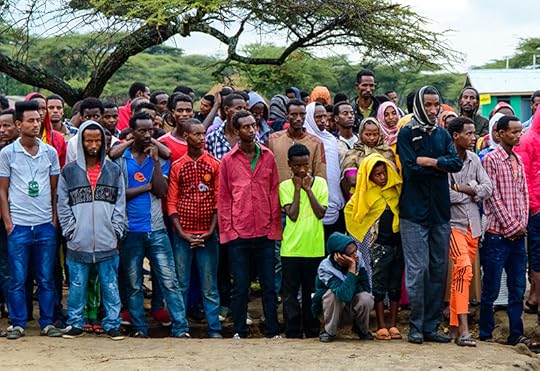
Ethiopia's Ethiotrail Races
Hundreds of local villagers from throughout the area made the trek to watch the race and cheer on the runners. Photo: Peter N. Jones
View Larger Image
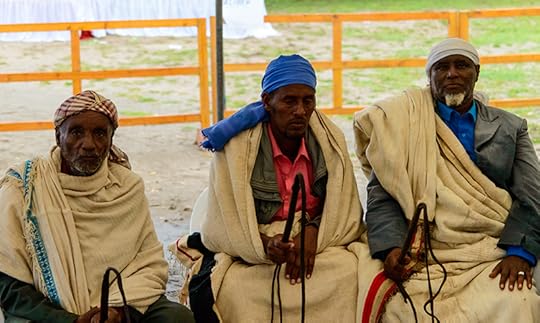
Ethiopia's Ethiotrail Races
Oromo tribal chiefs from the local villages attended the race, giving their blessing to the event which works to help conservation in the national park and to provide employment to the local villagers. Photo: Peter N. Jones
View Larger Image

Ethiopia's Ethiotrail Races
Not everyone was there to race, and many runners from throughout Ethiopia and around the world came to have the opportunity to run through one of the oldest landscapes in the world—Ethiopia's ancient Rift Valley. Photo: Peter N. Jones
View Larger Image

Ethiopia's Ethiotrail Races
Running is taken very seriously in Ethiopia, even at trail races. Runners jostled for position at the start of the Ethiotrail race before winding along singletrack through Oromo tribal villages, up and over ancient volcanoes, and thick Acacia forests. Photo: Peter N. Jones
View Larger Image
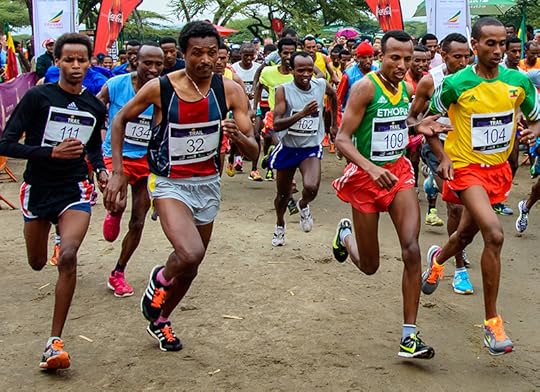
Ethiopia's Ethiotrail Races
The opportunity to win 10,000 Birr proved to be a strong motivator for runners, and the pace at the start was more like a road race than a typical trail race found in the U.S. Photo: Peter N. Jones
View Larger Image
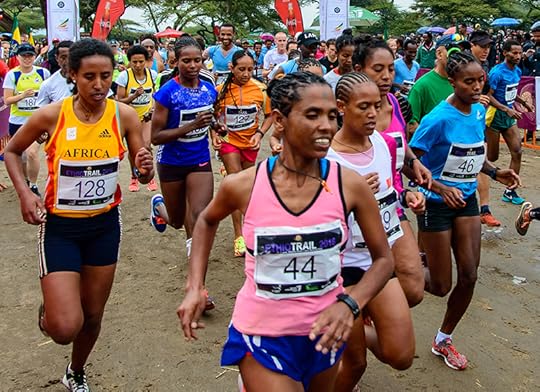
Ethiopia's Ethiotrail Races
The race provided the same prize purse to women runners as for men, attracting a strong women's field of fast runners aiming to take home the prize. Photo: Peter N. Jones
View Larger Image
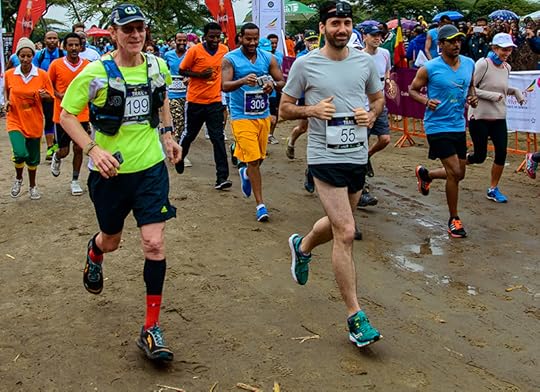
Ethiopia's Ethiotrail Races
With runners from more than 20 countries at the event, including South Africa, Australia, Germany, Denmark, United States, Saudi Arabia, Japan, Spain, and beyond, the race had a competitive yet festive atmosphere that welcomed runners of all abilities and nationalities. Photo: Peter N. Jones
View Larger Image
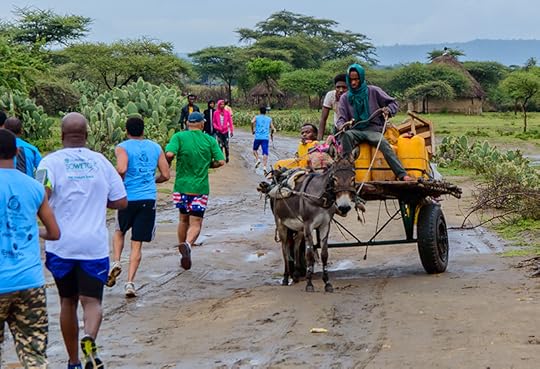
Ethiopia's Ethiotrail Races
Running through small Oromo tribal villages was one of the highlights of the course, but it also presented obstacles such as here, where runners had to go around a typical donkey and cart carrying drinkable water from the well to the village. Photo: Peter N. Jones
View Larger Image

Ethiopia's Ethiotrail Races
South African runner Steve Granger ran up one of the many short but steep ravines that the course crosses. The course undulated through the National Park across numerous ravines, as well as climbing two volcanoes and traversing the shores of Lake Shalla. Photo: Peter N. Jones
View Larger Image

Ethiopia's Ethiotrail Races
Runners quickly spread out along the course as it passed through Oromo tribal villages and farmland. Photo: Peter N. Jones
View Larger Image
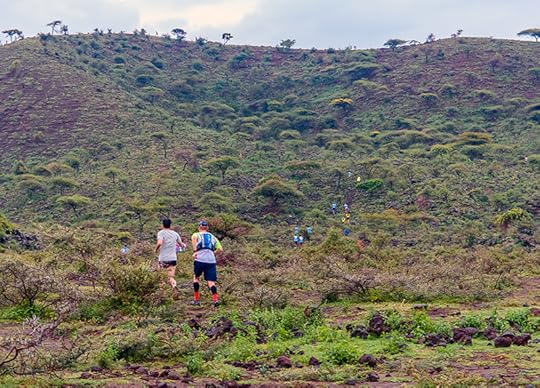
Ethiopia's Ethiotrail Races
Runners had to climb up the side of this ancient volcano, along a rocky off-trail section that led to a spectacular ridge traverse and expansive view of the Rift Valley below. Photo: Peter N. Jones
View Larger Image
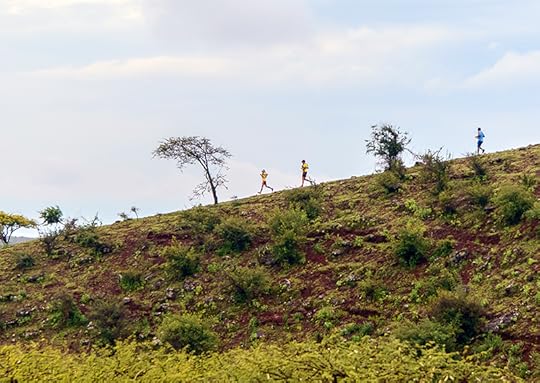
Ethiopia's Ethiotrail Races
A large part of the course was off-trail, marked simply with red ribbons hanging from the Acacia trees. Here runners hammer down one of the ridges from the top of an ancient volcano back to the Rift Valley floor. Photo: Peter N. Jones
View Larger Image

Ethiopia's Ethiotrail Races
With expansive views in all directions, the course proved to be both technical but aesthetically pleasing as runners had the opportunity to run through parts of the National Park normally not accessible. Photo: Peter N. Jones
View Larger Image
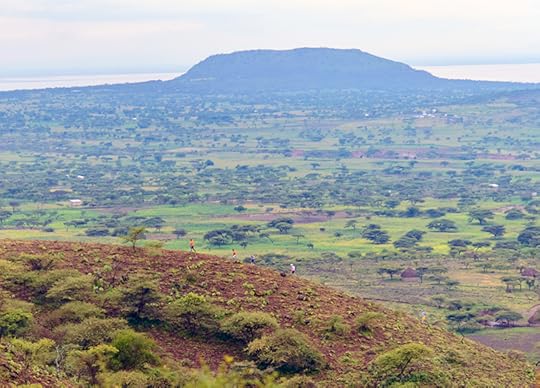
Ethiopia's Ethiotrail Races
After running up to the top of one volcano, runners then descended down back to the valley floor before running along the shores of Shalla Lake and ascending the small volcano in the distance. Photo: Peter N. Jones
View Larger Image
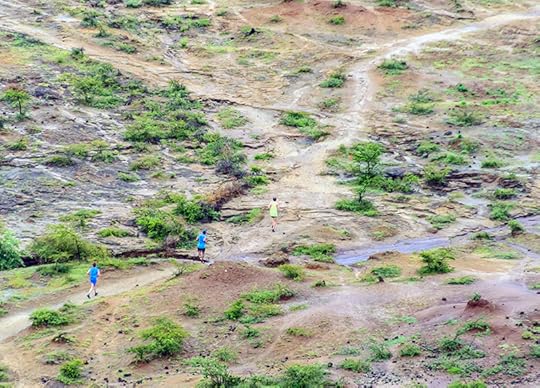
Ethiopia's Ethiotrail Races
Parts of the course traversed ancient flood plains and river beds, taking runners through landscapes that are similar to the landscapes the first humans ever ran across. “Lucy,” perhaps the most famous hominin skeleton ever found, was recovered in 1974 at a site less than 50 miles from the race course. Photo: Peter N. Jones
View Larger Image
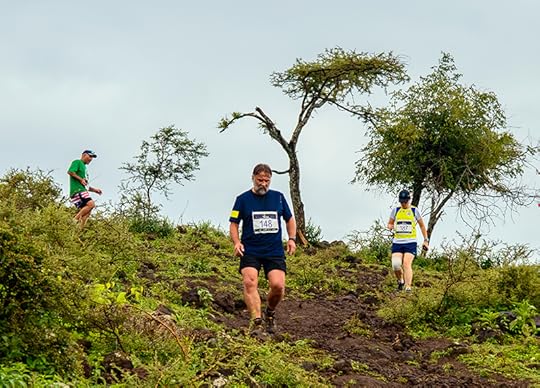
Ethiopia's Ethiotrail Races
The steep, rocky sides of the volcanoes required expert footing as runners had to watch their footing on the slick, razor sharp rocks. Photo: Peter N. Jones
View Larger Image
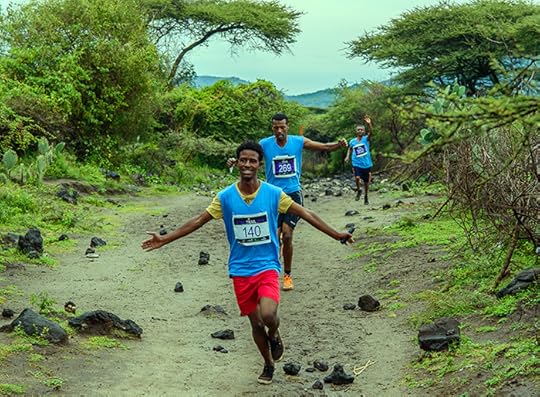
Ethiopia's Ethiotrail Races
Many of the Ethiopian runners lacked proper running gear, yet were able to cover the course with a smile while running in sandals, or low-tops as in this case. Photo: Peter N. Jones
View Larger Image
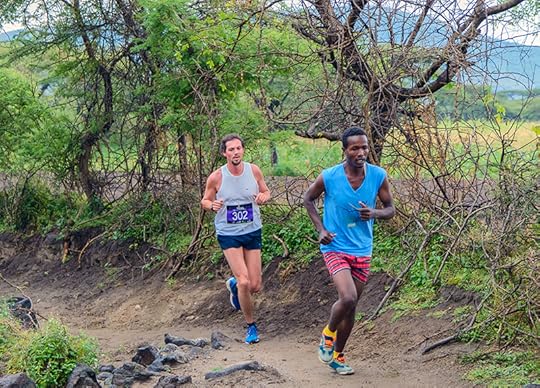
Ethiopia's Ethiotrail Races
Despite not speaking the same language, runners shared the course and some miles with each other, bringing a communal, festive vibe to the race. Photo: Peter N. Jones
View Larger Image
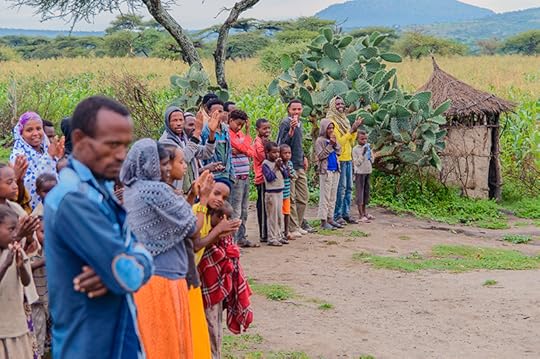
Ethiopia's Ethiotrail Races
All along the course Oromo villagers came out to watch and cheer on the runners. Photo: Peter N. Jones
View Larger Image
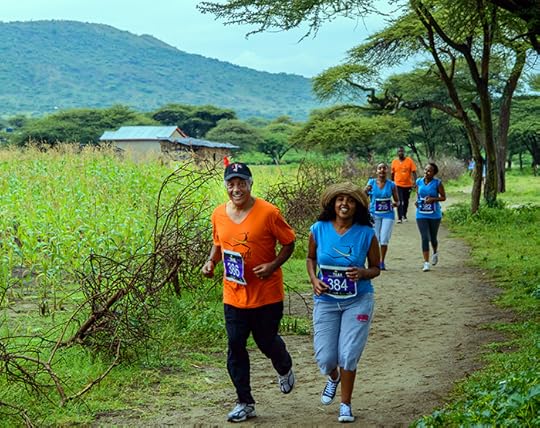
Ethiopia's Ethiotrail Races
In Ethiopia, everyone runs, from the young to the old, fast to the slow. Running is part of Ethiopian culture, and sharing a few miles with friends brings a smile to everyone's face. Photo: Peter N. Jones
View Larger Image
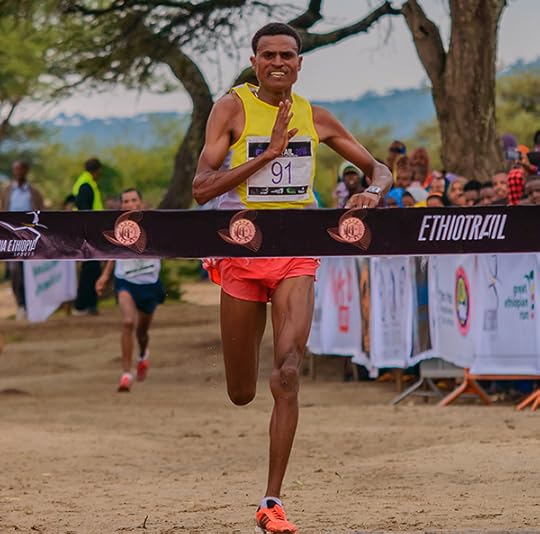
Ethiopia's Ethiotrail Races
Ethiopian elite runner Ifa Belda came away with the win, with a time of 1:16:52 on the technical course. Photo: Peter N. Jones
View Larger Image
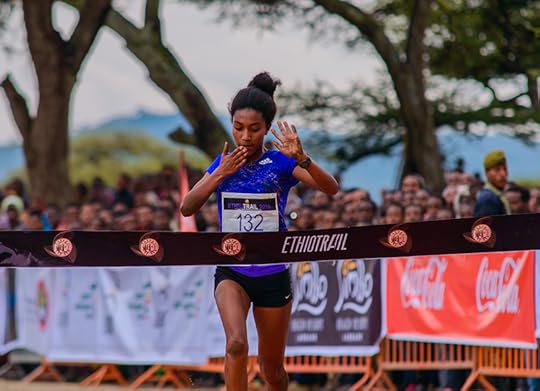
Ethiopia's Ethiotrail Races
Likna Ambaw was the women's winner with a time of 1:28:47. Many runners came across the finish line covered in mud from slipping on the technical descents of the volcanoes. Photo: Peter N. Jones
View Larger Image
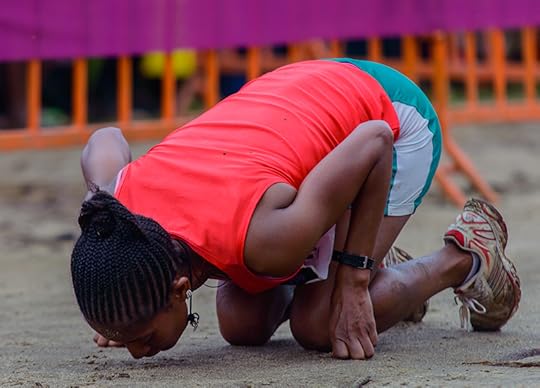
Ethiopia's Ethiotrail Races
Offering thanks for completing the run was common among all runners. The ancient Rift Valley has been home to humankind for over 5 million years, and honoring that long legacy of respect for the land and what it provides was common among all runners. Photo: Peter N. Jones

More Galleries
The post Running Deep in the Heart of Ethiopia’s Rift Valley appeared first on Competitor.com.
Ryan Hall's Blog
- Ryan Hall's profile
- 21 followers



